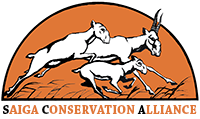Institutional Members
Below is a list of the SCA’s current institutional members, and your organisation can join them!
Membership is free – all you have to do is email us. Institutional members of the SCA have the opportunity to display their name and a web link on this page, as well as the option to provide more information about their organisation and their link to saigas on their own dedicated page. Additionally, your organisation can gain further exposure by sponsoring Saiga News, our bi-annual newsletter, or by sponsoring the SCA small grants competition, which awards grants to local conservationists to carry out small, focused conservation projects of up to $2,000.
If your organisation is interested in joining, please do get in touch. In the meantime, please have a look at our current institutional members!
Our Institutional Members
BAG Eurasia of NABU
 Working group of the German Society for Nature Conservation (NABU) dealing with conservation projects in Europe and Asia.
Working group of the German Society for Nature Conservation (NABU) dealing with conservation projects in Europe and Asia.
For more information on BAG of Eurasia NABU’s work with saiga, visit their website.
Conservation Works
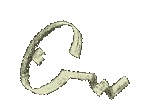 Conservation Works’ mission is to improve wildlife conservation effectiveness by offering donors a funding mechanism that ensures value for their support.
Conservation Works’ mission is to improve wildlife conservation effectiveness by offering donors a funding mechanism that ensures value for their support.
Conservation Works facilitated an e-dialogue between European zoos and an international NGO to help conserve the saiga. This led to identifying a major obstruction to progress, a lack of knowledge about saiga migratory movements. Conservation Works has sponsored the SCA to help support a major study to discover where saiga go and when, critical to a strategic plan for their future protection and management.
Visit the Conservation Works website to find out more about them.
Frankfurt Zoological Society
 The Frankfurt Zoological Society (FZS) was established in 1858 and has been involved in over 70 conservation projects in 30 countries, focusing on eastern Africa where their long-serving president, Professor Dr. Bernhard Grzimek invested much time and effort.
The Frankfurt Zoological Society (FZS) was established in 1858 and has been involved in over 70 conservation projects in 30 countries, focusing on eastern Africa where their long-serving president, Professor Dr. Bernhard Grzimek invested much time and effort.
Find out how the FZS supports saiga conservation on their website.
Large Herbivore Network
 The Large Herbivore Network (LHNet) is an independent knowledge network under the umbrella of ECNC-European Centre for Nature Conservation. LHNet’s focus is to preserve and restore all large herbivores in Eurasia in the wild, so that they are visible to a broad public. LHNet brings together experts and interested parties, as well as non-governmental and governmental organizations (NGOs and GOs) of many nationalities and from a wide range of disciplines.
The Large Herbivore Network (LHNet) is an independent knowledge network under the umbrella of ECNC-European Centre for Nature Conservation. LHNet’s focus is to preserve and restore all large herbivores in Eurasia in the wild, so that they are visible to a broad public. LHNet brings together experts and interested parties, as well as non-governmental and governmental organizations (NGOs and GOs) of many nationalities and from a wide range of disciplines.
Find out more about them on the LHNet website.
UNESCO MAB (Russia)
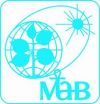 Find out about the Russian Committee for the UNESCO Programme on Man and the Biosphere’s work with saiga by visiting their website.
Find out about the Russian Committee for the UNESCO Programme on Man and the Biosphere’s work with saiga by visiting their website.
WWF Mongolia
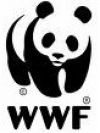 World Wildlife Federation (WWF) Mongolia has supported Saiga conservation since 1998. WWF started a new, major action, in September 2007 with financial support from the MAVA Foundation. The main goal of the project is:
World Wildlife Federation (WWF) Mongolia has supported Saiga conservation since 1998. WWF started a new, major action, in September 2007 with financial support from the MAVA Foundation. The main goal of the project is:
• Strengthening law enforcement by setting-up a Saiga Conservation Mobile Anti-poaching Unit and a community based network of Saiga Rangers.
• Intensifying cooperation with local people (herders) to promote community based Saiga conservation and Saiga oriented rangeland management.
• Launching a broad education and awareness program.
CIC Wildlife
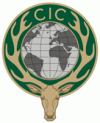 CIC Wildlife is the International Council for Game and Wildlife Conservation. With its renowned scientific capacity, CIC Wildlife assists governments and environmental organizations in maintaining natural resources by sustainable use.
CIC Wildlife is the International Council for Game and Wildlife Conservation. With its renowned scientific capacity, CIC Wildlife assists governments and environmental organizations in maintaining natural resources by sustainable use.
CIC Wildlife was the first ever Institutional Member of the SCA! They were our first Featured Institutional Member in the January 2009 issue of Saiga News.
Visit their website to find out more about them and how they help the saiga.
Fauna and Flora International
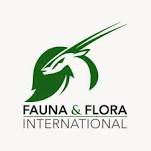 Fauna & Flora International (FFI) was established over a century ago. Founded in 1903, it was the world’s first international conservation organization and the pioneering work of its founders in Africa led to the creation of numerous protected areas, including Kruger and Serengeti National Parks.
Fauna & Flora International (FFI) was established over a century ago. Founded in 1903, it was the world’s first international conservation organization and the pioneering work of its founders in Africa led to the creation of numerous protected areas, including Kruger and Serengeti National Parks.
Expanding beyond its African origins, Fauna & Flora International succeeded in giving conservation a voice on the international stage, drawing worldwide attention to the plight of rare and endangered species.
For more information, visit the Flora and Fauna International website.
Gilman International Conservation
 Gilman International Conservation (GIC) supports the conservation of flagship species through partnerships that safeguard habitat, protect wildlife, and engage local communities. GIC is based at the White Oaks Conservation Centre in North Florida, one of the world’s premiere wildlife breeding, research and training facilities.
Gilman International Conservation (GIC) supports the conservation of flagship species through partnerships that safeguard habitat, protect wildlife, and engage local communities. GIC is based at the White Oaks Conservation Centre in North Florida, one of the world’s premiere wildlife breeding, research and training facilities.Spitalfields City Farm
 Spitalfields City Farm is the nearest city farm to the city of London, the capital’s financial centre. Despite this, the farm is located in one of the most deprived and densely populated wards of Tower Hamlets, although Spitalfields remains a vibrant and colourful multi-cultural area with strong community links.
Spitalfields City Farm is the nearest city farm to the city of London, the capital’s financial centre. Despite this, the farm is located in one of the most deprived and densely populated wards of Tower Hamlets, although Spitalfields remains a vibrant and colourful multi-cultural area with strong community links.
Receiving over 18,000 visitors a year and spread over 1.3 acres of land owned by the London Borough of Tower Hamlets and Railtrack. The farm keeps a selection of farm animals and has developed growing areas in every available space.
To read more about Spitalfield’s involvement with the SCA’s cross-cultural exchange between the UK and Kalmykia, Russia, click here.
Spitalfields City Farm is now offering saiga sponsorships as part of their popular Animal Adoptions scheme! For more information, visit their website.
Uzbekistan Zoological Society
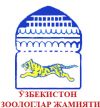 The Uzbekistan Zoology Society currently has no website.
The Uzbekistan Zoology Society currently has no website.